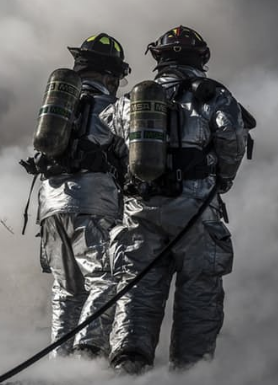For Immediate Release

Westone Laboratories
2235 Executive Circle
Colorado Springs, CO 80906
www.Westone.com
Westone Acquires North America’s Largest Custom-Fit Industrial Hearing Protection Manufacturer
Colorado Springs, CO – February 14, 2019 – In partnership with their principal investment group, HealthEdge Investment Partners, Westone Laboratories, Inc., a market leader in custom earpieces, high performance in-ear monitoring technology and hearing protection, announced it has closed on its acquisition of Custom Protect Ear, the largest custom-fit industrial hearing protection manufacturer in North America.
Zubin Meshginpoosh, President and Chief Commercial Officer of Westone shared, “We are delighted to join forces with Custom Protect Ear, the most trusted brand in custom-fit hearing protection used by hundreds of industrial clients across a wide variety of industries.”
Jeffrey Goldberg, Chairman, and CEO of Custom Protect Ear added, “Noise-Induced Hearing Loss (NIHL) is an epidemic in the workplace, and we remain steadfast in our commitment to eradicate it. This partnership with Westone allows us to expand our geographic reach, increase the pace of innovation and have a positive impact on more lives.”
Custom Protect Ear’s management team and operations will remain headquartered in Vancouver, BC with an operating subsidiary, ProtectEar USA, based in the United States.
About Westone
Established in 1959, Westone Laboratories is celebrating 60 years of delivering custom earpieces that protect and enhance hearing, facilitate communication, and support hearing healthcare professionals. The largest manufacturer of custom earpieces in the world with both hearing healthcare and music specialists on our research, development and production teams, Westone is recognized as a leading innovator across the custom earplug, hearing protection, and music industries. Westone is a proud partner of the United States Military providing specially designed communication-enabled and hearing protection earpieces for service members and first-responders around the world. It is our people, our experience, and our products that truly make Westone “The In-Ear Experts®.” For more information, visit Westone.com or contact Jeff Ipson at (719) 540-9333.
About Custom Protect Ear
Based in Vancouver, British Columbia, Custom Protect Ear was founded in 1976 and provides effective, verifiable, and noise level matched industrial hearing protection to over 4,500 corporate clients worldwide across a wide range of industries including distribution, manufacturing, machining, energy, packaging, public safety & security, transportation, and food. CPE is a certified and compliant ISO 9001 manufacturer that incorporates both traditional handcrafted manufacturing processes and leading-edge 3D printing technology. Known for their product quality and customer service, CPE utilizes a custom fitting process performed by highly trained technicians to personalize every protective earpiece to each user then backs it with a ‘FitRight Guarantee’ and industry-leading warranty program. For more information, visit ProtectEar.com
About HealthEdge Investment Partners
HealthEdge Investment Partners, LLC is an operating-oriented private equity firm founded in 2005 that focuses exclusively on the healthcare industry. HealthEdge seeks to achieve superior returns by investing in businesses that benefit from the knowledge, experience, and network of relationships of its partners. HealthEdge’s partners have more than 100 years of combined operating experience in healthcare as CEOs and investors. For more information on HealthEdge, please visit HealthEdgepartners.com or contact Elizabeth Breslin at (813) 490-7104.


